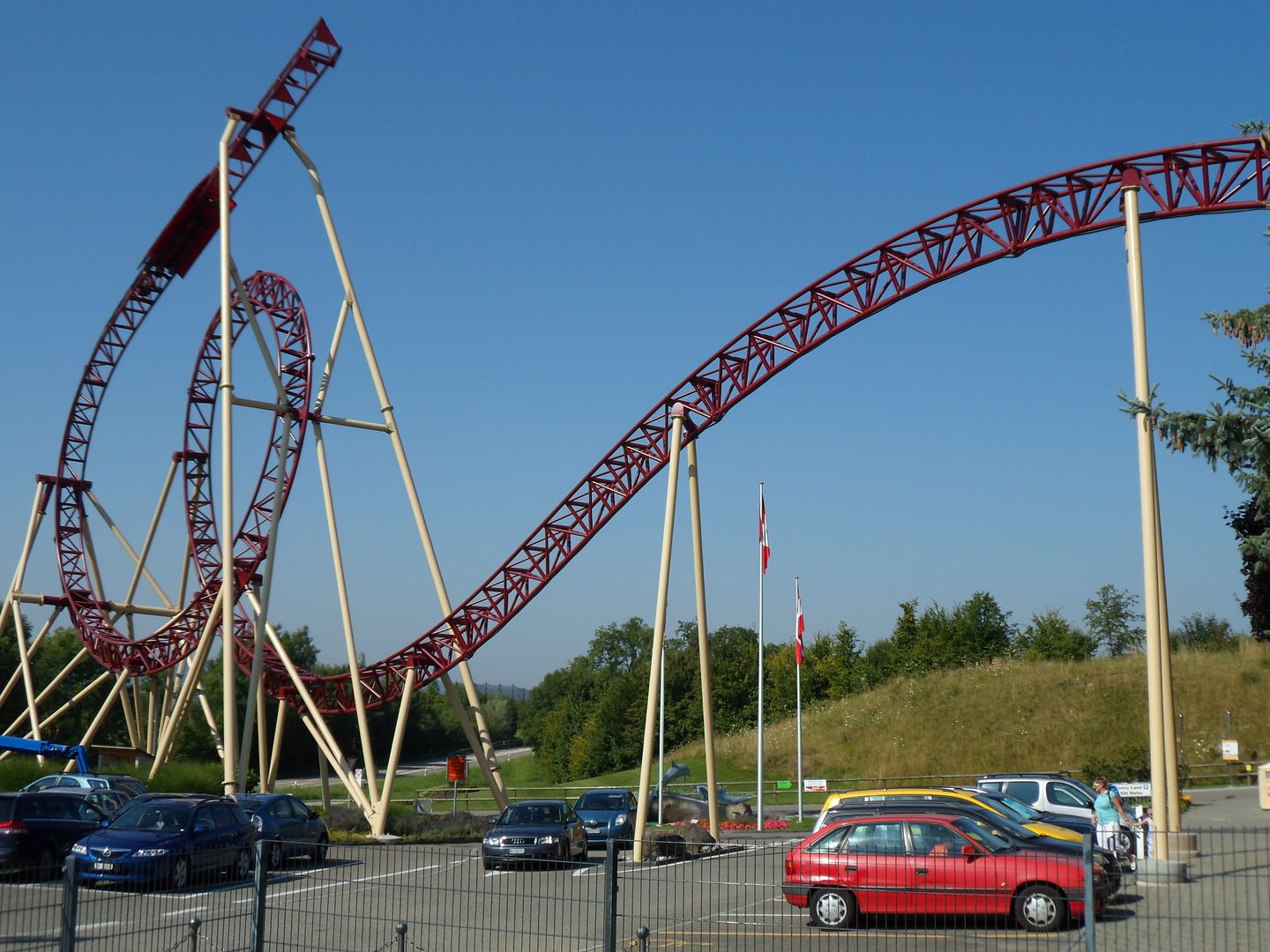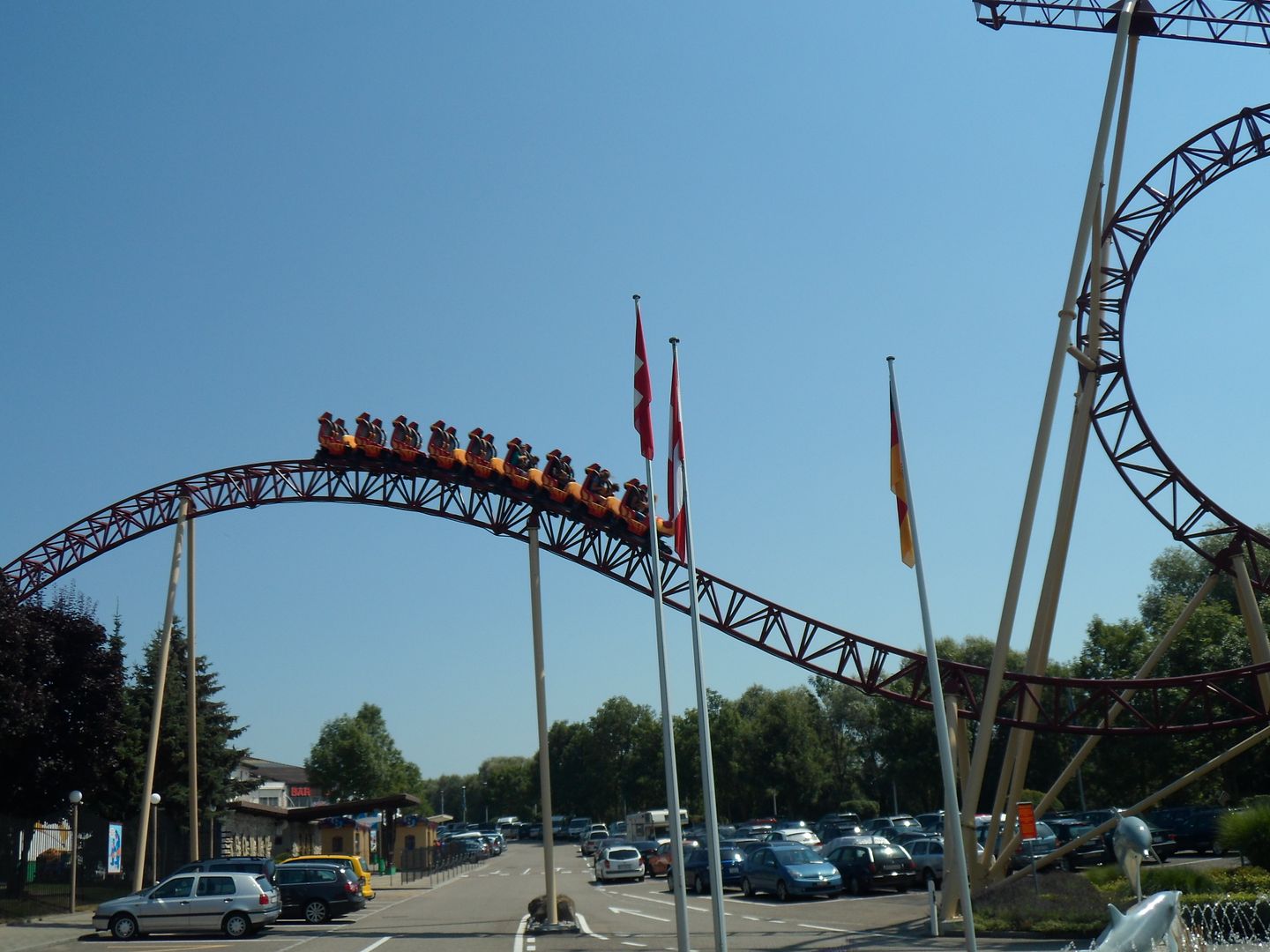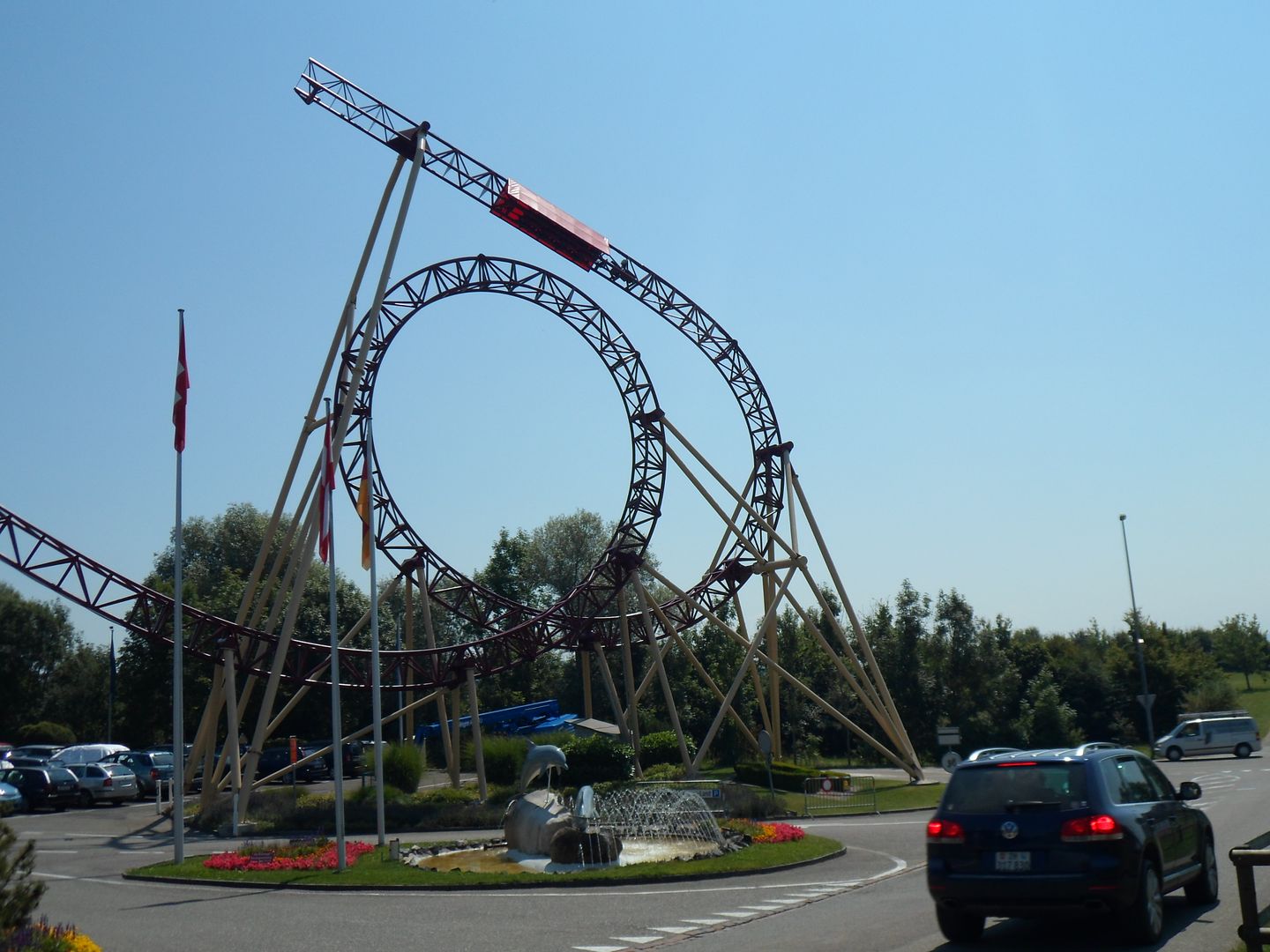Discussion in the Awesome Settings thread partially centered on parking lot roller coasters, and if they do or do not make for a nice setting.
This got me think - across time, there have been many amusement parks that have built roller coasters on or near parking lots. Sometimes they take up the pavement to be replaced by light grass, others they leave the pavement, painted parking spaces and all.
However, time also marches forward. Pavement crumbles to gravel, roller coasters age, and ongoing generations of roller coaster riders forget that roller coasters were built on parking lots all together.
So what defines a parking lot roller coaster? And more to the point, is it possible for a parking lot roller coaster to lose such a status over time?
Some examples:
Jumbo Jet at Cedar Point was originally built on a parking lot in 1972. You can see some of the parking lines in the below photo:
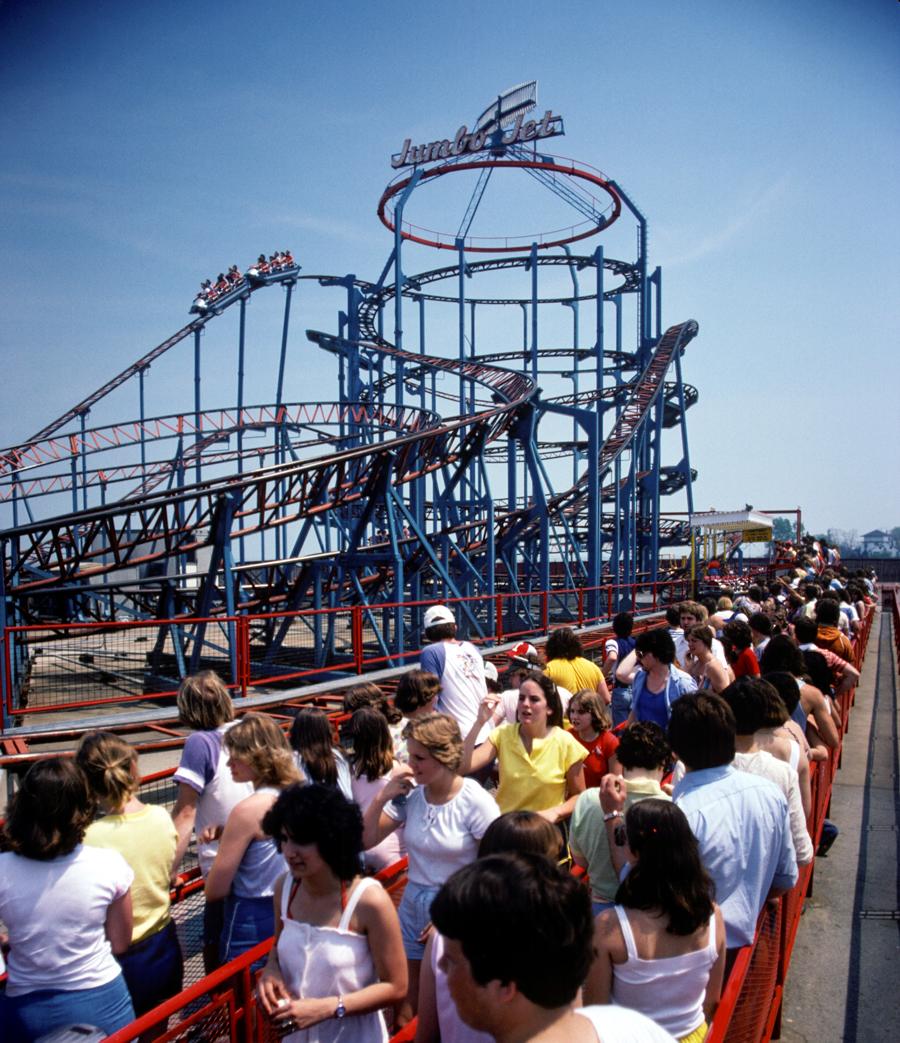
This build site was later host to Avalanche Run in 1985 - while some landscaping was added, you could still see plenty of the parking lot features, as the queue ran right underneath the ride.
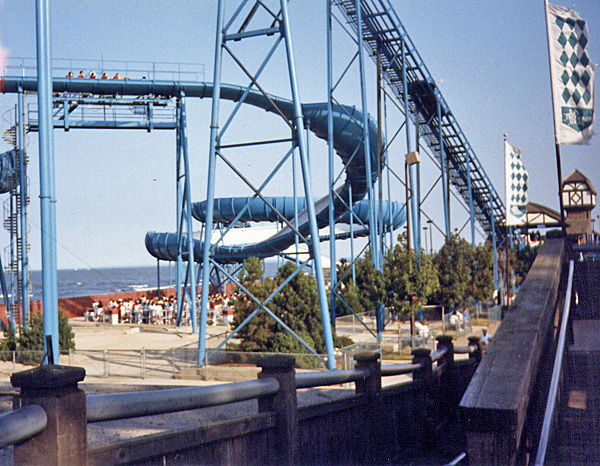
Even once the ride had been converted to Disaster Transport, you could still see old parking lines. However, as the ride had been converted to an indoor roller coaster, such points became moot - Cedar Point proceeded to use this as a major storage area from the early 1990s on.

And come Gatekeeper? You guessed it - the ride was still built atop some of that original parking lot area, while also cutting across new parking lot space in order to traverse the front gate.


Some other examples of parking lot roller coasters:
Dominator at Kings Dominion is built atop old parking lot area, which was dug up for replacement by grass:
_02_Full_Layout.jpg)
Green Lantern and Superman Ultimate Flight too sit on reclaimed parking lot space at Six Flags Great Adventure, which in part originally hosted Great American Scream Machine in 1989:

Scream at Six Flags Magic Mountain rather famously sits atop parking lot space - however Colossus right next door was also built on parking space back in 1978:

There are many instances, both old and new, of roller coasters being built on parking lots. However, do we still consider a roller coaster to be a parking lot coaster if it is replaced with a new addition or conversion? Does a parking lot still count 20 years on?
While some examples such as Scream seem rather cut and dry, there can be nuance, such as that presented above, which can create a certain fuzzy area when designating a roller coaster a "parking lot coaster."
This got me think - across time, there have been many amusement parks that have built roller coasters on or near parking lots. Sometimes they take up the pavement to be replaced by light grass, others they leave the pavement, painted parking spaces and all.
However, time also marches forward. Pavement crumbles to gravel, roller coasters age, and ongoing generations of roller coaster riders forget that roller coasters were built on parking lots all together.
So what defines a parking lot roller coaster? And more to the point, is it possible for a parking lot roller coaster to lose such a status over time?
Some examples:
Jumbo Jet at Cedar Point was originally built on a parking lot in 1972. You can see some of the parking lines in the below photo:

This build site was later host to Avalanche Run in 1985 - while some landscaping was added, you could still see plenty of the parking lot features, as the queue ran right underneath the ride.

Even once the ride had been converted to Disaster Transport, you could still see old parking lines. However, as the ride had been converted to an indoor roller coaster, such points became moot - Cedar Point proceeded to use this as a major storage area from the early 1990s on.

And come Gatekeeper? You guessed it - the ride was still built atop some of that original parking lot area, while also cutting across new parking lot space in order to traverse the front gate.


Some other examples of parking lot roller coasters:
Dominator at Kings Dominion is built atop old parking lot area, which was dug up for replacement by grass:
_02_Full_Layout.jpg)
Green Lantern and Superman Ultimate Flight too sit on reclaimed parking lot space at Six Flags Great Adventure, which in part originally hosted Great American Scream Machine in 1989:

Scream at Six Flags Magic Mountain rather famously sits atop parking lot space - however Colossus right next door was also built on parking space back in 1978:

There are many instances, both old and new, of roller coasters being built on parking lots. However, do we still consider a roller coaster to be a parking lot coaster if it is replaced with a new addition or conversion? Does a parking lot still count 20 years on?
While some examples such as Scream seem rather cut and dry, there can be nuance, such as that presented above, which can create a certain fuzzy area when designating a roller coaster a "parking lot coaster."



